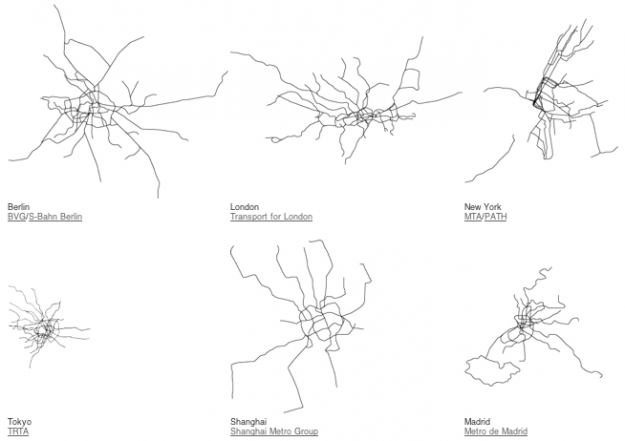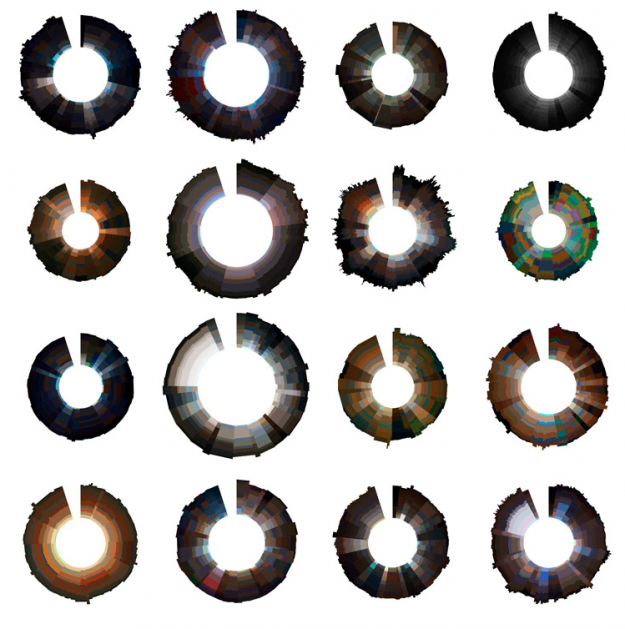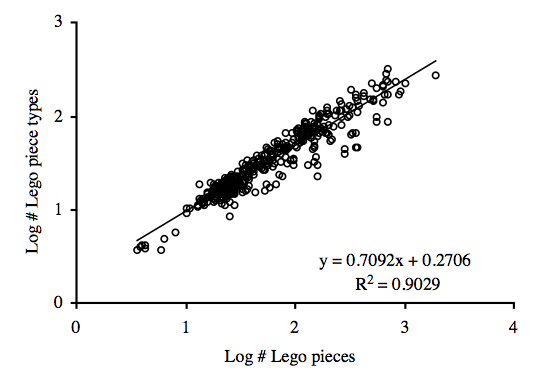World subway paths at scale
Jan 13, 2012 12:55 am • Permalink 
Urban planner Neil Freeman maps the world's subway systems to scale in a minimal style resembling the scribbles or renderings of weird sea creatures by a two-year-old. I wish there were nodes to show stops, too, but the contrasts between the compact TRTA in Tokyo and RATP in Paris, and the spread out Seoul Metro and Transport for London is an interesting look.
[Neil Freeman via @kennethfield]

Cinemetrics creates a visual fingerprint for movies
Jan 12, 2012 02:30 am • Permalink 
As we saw with movie barcodes, each film has a uniqueness that can be broken into bits of data. Cinemetrics, by Frederic Brodbeck, provides a different view.
Each film is broken into segments, where each segment represents ten shots. Color changes with each movie and with each ten-shot chapter. And then the segments are set in motion based on the amount of movement in that chapter so that action sequences show rapid pulsations. For example, the first circle in the top left is Alien, whereas the last one in the second row is The Simpsons.
See it in action in the animated video.
The code is available on github, and individual movie fingerprints are available in poster form.
[Cinemetrics via @blprnt]

Lego mathematics and growing complexity in networks
Jan 12, 2012 12:03 am • Permalink 
Legos are the best toys ever invented. That's indisputable fact. So it's no surprise that Mark Changizi et al. at Duke University used the toys in their study of growing complexity of systems and networks. They looked at 389 Lego sets and compared the number of pieces in the set to the number of piece types, as shown above.
This curve demonstrates that as the number of pieces in a set grows, so do the number of piece types. However, the number of piece types grows sublinearly: while a larger set uses more piece types, as sets becomes larger, they use progressively fewer additional piece types (so larger sets actually use fewer types per piece). This is similar to other sublinear curves, where larger animals use less energy per cell for metabolism or larger cities actually need fewer gas stations per capita. Essentially, larger sets become more efficient, using the same pieces that smaller sets do, but in a more complex and diverse way.
Now to more important matters... look at this cool thing I made with the Legos my wife got me for Christmas. It's a spaceship airplane race car. Despite leaps in technology from now to the Lego man's current time, he still has to talk into a walkie talkie that is bigger than his head.

This just in: While the number of Lego piece types increases with larger sets, the maturity of the Lego users exponentially decreases.
[Wired via @ajturner]

No comments:
Post a Comment